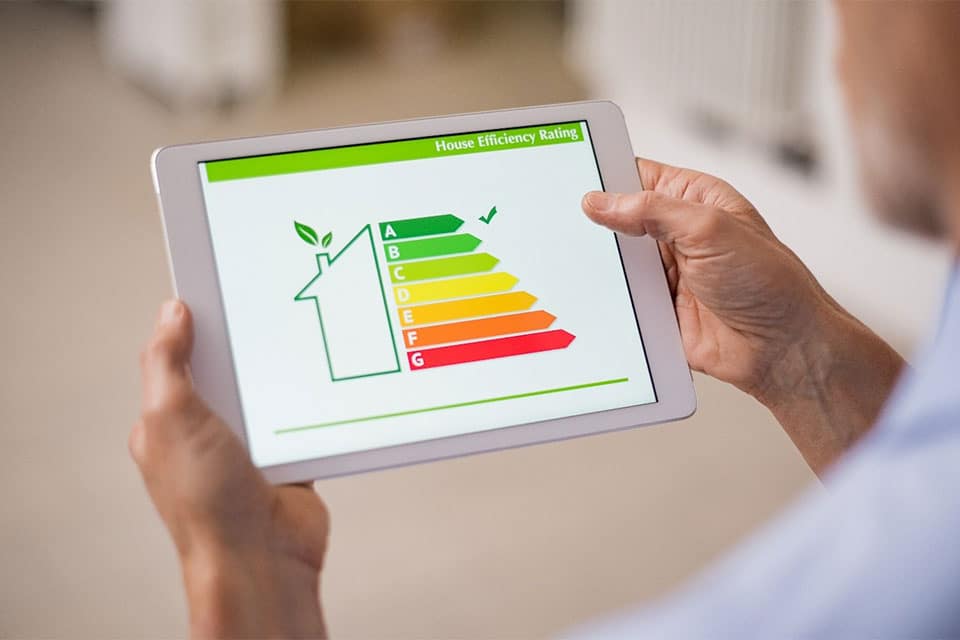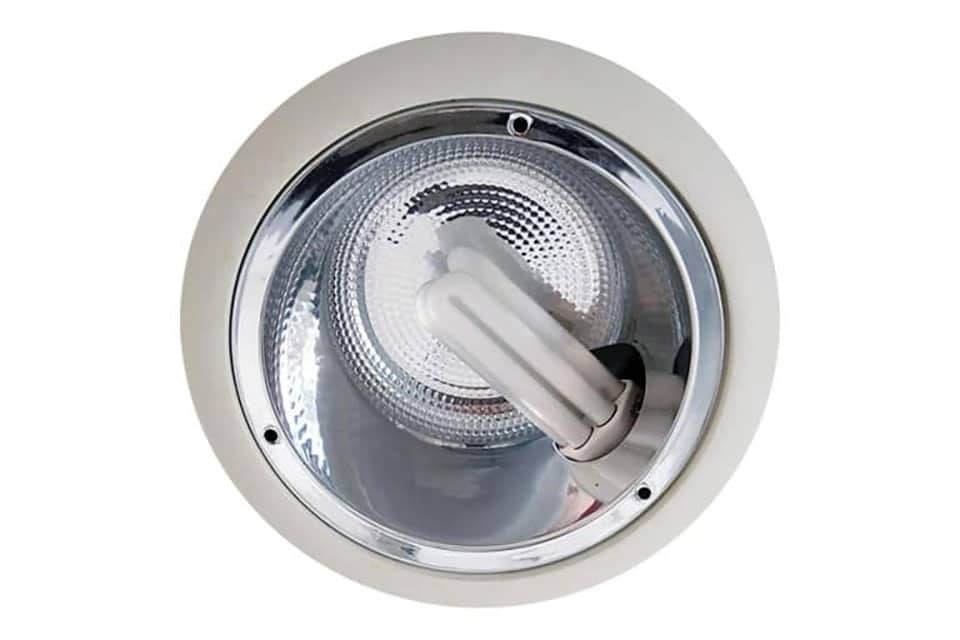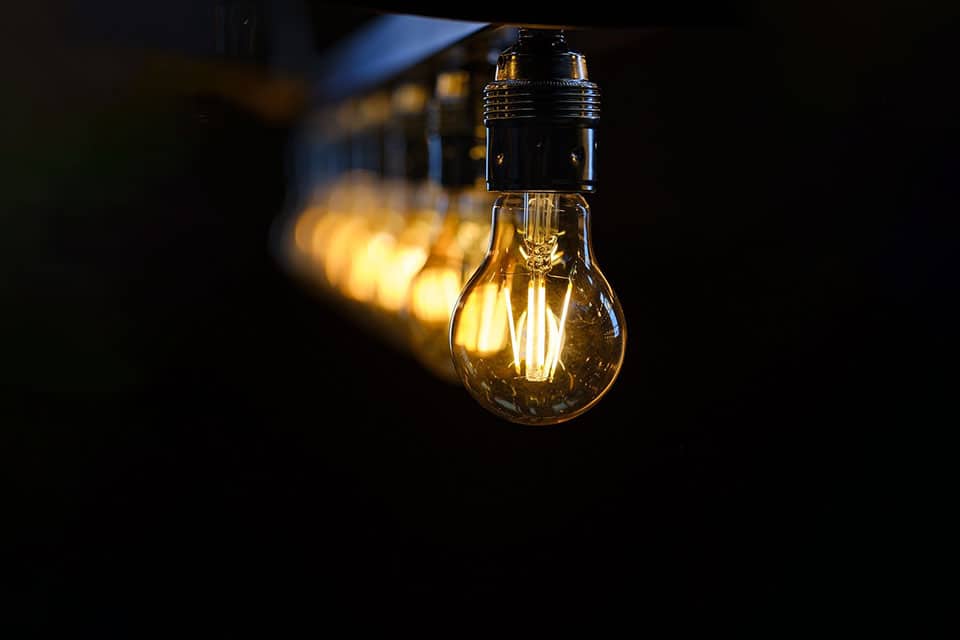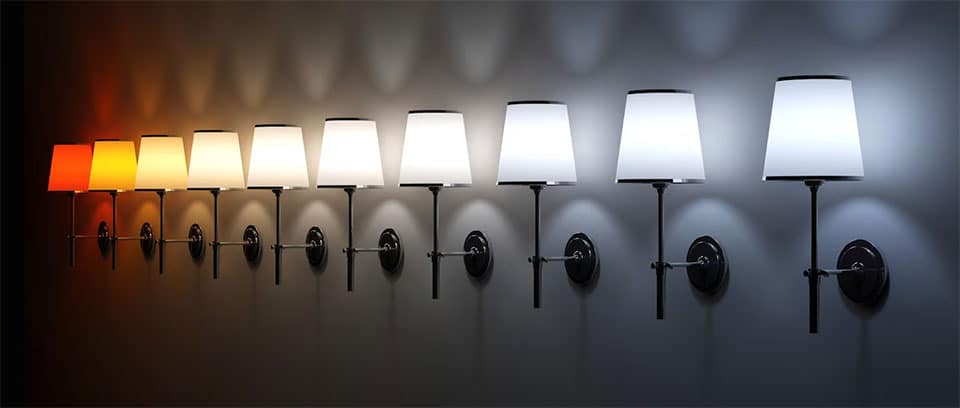What are energy rating labels?
EU Energy labels appear on many types of household devices including televisions, washing machines and of course, light bulbs. They are designed to show how energy efficient an appliance is using a simple letter. Prior to the change in 2021, the most energy efficient products were rated “A+++” and all the way down to a “G” for the least energy efficient.
This system was in place in the UK and EU for over 25 years to help consumers make informed choices and allow them to be more environmentally conscious.
Why are the energy rating labels changing?
As products have become more and more efficient, the previous ratings became less useful. Although an A rated light bulb from a few years ago may have been the most efficient at the time, increasing innovation from manufacturers has led to more efficient products. In the short term, ratings were extended to add “+” symbols including “A+”, “A++” and “A+++”. Adding the “+” ratings became confusing and a decision was made to rescale the labels.
What’s changed with the new labels?
Since the 1st September 2021, the energy labels that tell us how energy efficient a light bulb is have changed. The scale of A+, A++, and A+++ will now be abandoned and replaced with a scale from A to G. So it will now be clear to consumers that A is the highest rating of efficiency, while G is the lowest. The new system will provide sufficient space for further technological development and the possibility for appliances to move up the scale over time.
The main change will be the removal of the plus sign classes, making the highest possible rating an ‘A’. But, to keep pace with innovation and to allow for more energy efficient products in the future, the ‘A’ rating is reserved. Basically, it means that that a product may go from being ‘A+++’ rated, down to a B, C or even a D. Very few products will be rated as ‘A’.
Even though a product may now have a much lower rating, it’s important to remember that it hasn’t become any less efficient; it’s just the scale of ratings that have changed, thanks to society’s positive attitude to energy efficiency.
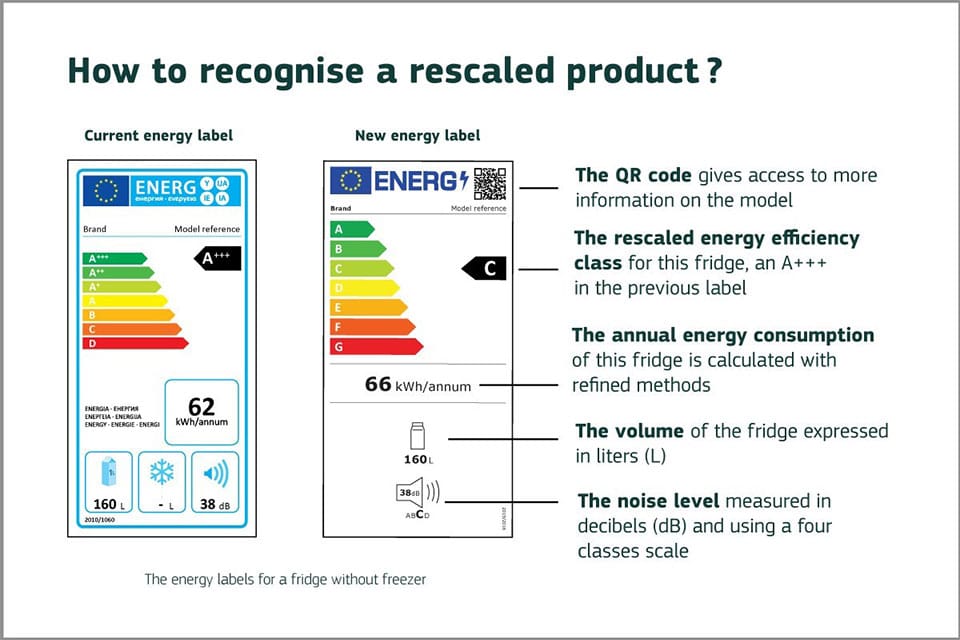
Energy labels indicate which energy efficiency category an electrical product or appliance falls into. It is a comprehensive system that spans all of the EU to give consumers a better understanding of the efficiency and effectiveness of their appliances. It can also provide a deeper understanding and consumer consciousness as to which appliances are the most efficient for the environment.
The system was introduced in 1995 however the currently used A+, A++ and A+++ classes have become confusing over time. Most new products exist in these three categories now, while none are in the lowest. This is confusing to consumers as many people believe that when buying an A+ category appliance, they are buying a product with a high-level energy efficiency rating, which is not true as A+ is the third highest, not the highest.
When do the new energy labels come into play and what kind of appliances are affected?
The new EU energy labels will be enforced on 1st March 2021. They will also appear on light sources from 1st September 2021. Energy labels on any other appliances, such as tumble dryers, ovens, and air conditioners will not be changing. They may change further into the future.
Are products with the new energy label less efficient?
No. They are still the same energy-efficient light as before – only the designated letter has changed. The new test procedure very future forward and also considers future lighting efficiency improvements. In short, the efficient products under the old energy label are just as efficient as the new one.






















































































